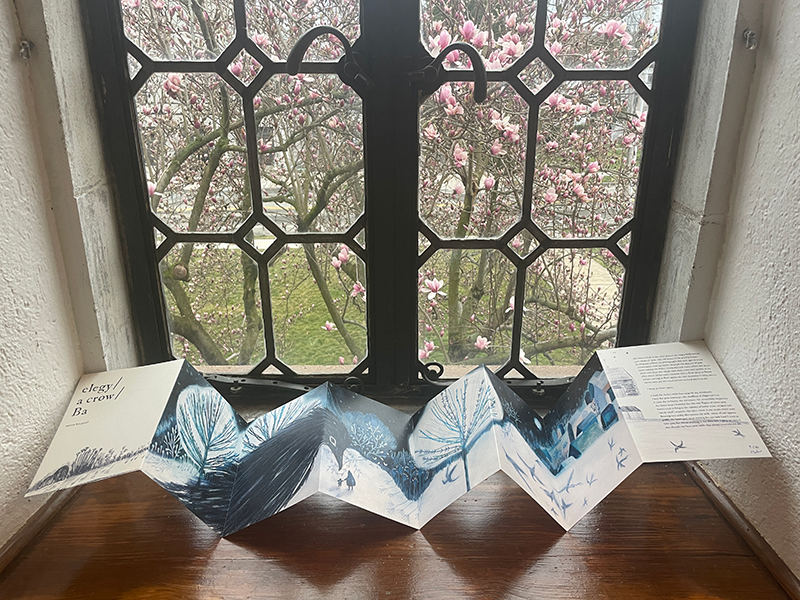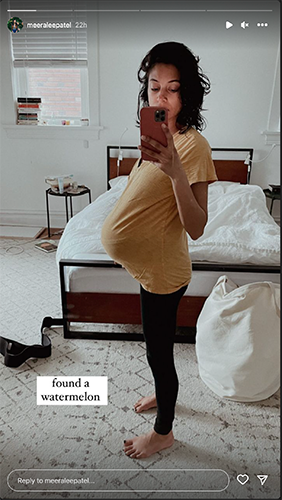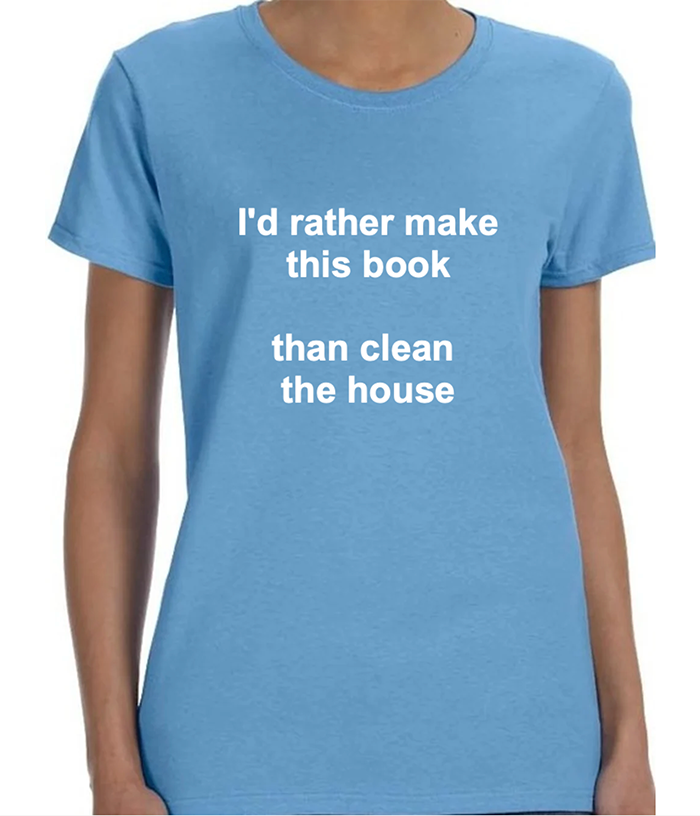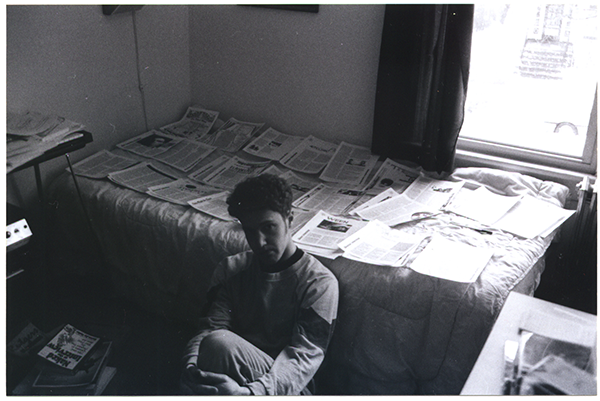Last week I wrote about the potential impact that artificial intelligence will have on writing, art, and creative work. Today, I want to focus on the opposite: the value of handcrafted creative work (writing, art, etc.), that by their nature are limited edition and deeply personal. What I will cover today:
- Why one writer and artist is investing in handcrafted work (this is a super inspiring story)
- How handcrafted is a power you have that is very accessible to you (if you dare)
- Handcrafted vs AI (who will win?! Sentient robots or funky writers and artists? Read on to find out!)
Okay, let’s dig in…
How Meera Lee Patel is Embracing Handcrafted Work
Meera Lee Patel is a successful writer and artist who I’ve worked with, and featured a few times in my blog/podcast (here, here, and here.) She has 50,000+ followers on Instagram, has published 5 (wonderful) books, and has earned a living as a writer and artist for years. But recently, she’s been changing direction. Her latest project is a handcrafted accordion book that she made only 50 copies of, and is selling for $20 each. Here is my copy which arrived in the mail the other day:

It consists of a beautiful illustration, moving prose, and was literally glued together by Meera. I texted Meera earlier this week to ask if she could chat via phone and talk about this. What she shared was soooooo inspiring.
 The context for my questions was this: here she is finishing up grad school, preparing to defend her thesis; she has a new book coming out in May; she is expecting her second child soon; she is so busy with life — so why spend all this time creating and printing and selling and gluing and mailing an accordion book? To the right is a photo Meera shared of herself this week.
The context for my questions was this: here she is finishing up grad school, preparing to defend her thesis; she has a new book coming out in May; she is expecting her second child soon; she is so busy with life — so why spend all this time creating and printing and selling and gluing and mailing an accordion book? To the right is a photo Meera shared of herself this week.
Her answer is so moving:
“I feel like I’m finally putting into motion what you and I talked about over a year and a half ago. I’ve been trying to figure out for a long time how to get back to myself. I want to pay attention to the artist in me, and the creativity in me, which took a back seat to the business of being a brand and artist.”
She shared how her success as a writer and artist had a personal downside:
“When I started out, I made what I wanted because it brought me joy. I would make limited copies, and every time someone bought one, it was unbelievable that someone would spend $20 on a thing I made. When I quit my job, and it had to be a sustainbale business, the numbers became so important. You can’t live on $20. When you work with a big publisher, 10 isn’t enough, 30,000 isn’t enough. I became super jaded. Doing this accordion book brings back a lot of the humanity to the art I’m interested in making next.”
I asked her about the process, which she addressed with such honesty:
“Yes, it is work. I’m not making any money on it, putting these book together while my daughter is napping. The money is not the important thing, and that feels good. It is about the art and heart and not the money. I do make money in my business in other ways, which allows me to do this personal work that gives me emotional and mental sustenance. I’m learning to find a balance between the work that pays me, and the work that encourages me to keep making.”
How does she do it all? I love her answer:
“Something has to go. I can’t tell you the last time I cleaned the house. I said to my husband: “I’m not cleaning anymore. I’d rather make this book than clean the house.”
I mean, I think that should be a t-shirt that people can buy:

Meera continued:
“Do I love having a dirty and messy house? No. But it’s a compromise I get to make to do something I want more. I don’t have a lot of time at all to work, so I make the most of the time I do have. It’s a lot of nights when when daughter is asleep. I’m putting less pressure on myself and that makes everything more enjoyable. To see myself as a person again, and not a company.”
I mean, that is the crux of it right there, the concept of handcrafted vs technology. Neither is inherently good or bad, it is how they create meaning in our lives. And Meera’s example is infinitely inspiring in this regard.
She summarizes what this all means to her, what is wrapped up in this edition of 50 handcrafted books:
“The biggest thing that changed is that it is important for me as an artist to be of service. The reason I make things is to find connection with myself, with other people, and within our larger world. But the way my career has been so far, I was just offering value to other people. In doing so, I’ve lost that connection to myself. In this new chapter, I’m focusing more on honoring and fostering a connection with myself — the stories I want to tell — and hoping that will still resonate with readers and offer them connection and comfort. I’m changing the question from: “What does someone need from me?” to “What do I need from me?” I’m putting myself first, which is something I haven’t done in a long time. I’m devoting myself to it. I’m going to make it no matter what.”
There are a few copies of her amazing accordion book left. You can see behind the scenes of the making of the book here. And you can find all things Meera on her website.
Handcrafted is a Power You Have
Handcrafted takes longer. It is oftentimes more expensive. It has less immediate reach. Yet, it is a power you have. Often people bemoan the fall of handcrafted — “I miss when, to make art, it meant you had to touch a brush to canvas. Nowadays it’s all just pixels and screens.” or “Oh, I remember the clack clack sound of a typewriter! I miss the days of writing longhand on a notepad.” But here’s the thing: these options are still available to you. My home is filled with traditional art supplies because my wife is an artist. I own 10+ typewriters, most of which work just fine. You have never had more access to amazing pens and beautiful paper.
Often, we dismiss handcrafted because it takes longer. It is simply much easier to use digital. To feel that the only way to create and to share is to “give in” to massive technology companies and distributors. I’m not judging that as a negative path, I simply want to highlight that you have the same options we had decades ago. In the 1990s I created a handmade zine where I interviewed and wrote about alternative music, indie bands, and Britpop. Along the way, I got to interview Oasis, Blur, and many of my musical heroes at the time. It was a long process, requiring long hours in the print shop, then piecing together the zine, then getting on my bike to deliver them to stores. Printing this zine put me thousands of dollars in debt at a time when I was earning minimum wage, and working three jobs at a time to ensure I could work almost every single shift in given week. Here I am with an issue being laid out on my bed:

Here I am writing, publishing, and distributing all on my own. It was amazing! Would I do this way today? Well, if you are reading this, you are doing so via my email newsletter or blog, so there is your answer. I’ve made the choice to write and publish and distribute and share in a different manner. Of course, the writing is still what I would call handcrafted. AI didn’t help me write this.
You get to choose how you create. How you publish. How you share. And like Meera, you can choose a mix of options, and those can change over time.
Handcrafted vs AI
The next few years will be filled with dramatic headlines of how AI is reshaping industry after industry. Instead of taking a stance for or against it, or preparing hundreds of responses of shock and dismay that will appear in social media feeds, I want to encourage you to focus your energy on creating and sharing.
Let’s just assume that AI will be a viable technology that will be integrated into everything. Yes, there will be compelling debates about if and how it should be regulated. About whether it is ethical. About how it is impacting real people’s lives as it potentially reshapes entire industries. These will be compelling debates. But I want to encourage you to not get sidetracked by it all too much. And instead fully embrace the creative work that you love, that you are capable of, and that real people will embrace. So that every ounce of your energy is focused on growing your creative work.
If you do this, handcrafted wins.
Handcrafted is thriving in the marketplace today in so many compelling ways, and I think it will do so even more in the future. Let me give you an example: Rhett Shull and Tilly Shull are a married couple in their early 30s, earning a living in the creative fields of music and photography.
Rhett is guitarist who lives in Atlanta and also spends a lot of time in Nashville. Like many musicians, his original trajectory was to earn a living a a session guitarist, member of a band, playing gigs and recording music. But something funny happened along the way: his YouTube channel became really big, with more than 500,000 subscribers. Now what is his actual career? YouTuber. Even though he still plays a lot of shows, and records a lot of music, his income is directly and indirectly now happening because of YouTube. So here is someone doing something handcrafted (making music on old-fashioned guitars and tube amps), but thriving in the marketplace due to new technology in a non-traditional way.
His wife Tilly has only recently launched her YouTube channel. Her focus? Film photography. Yep. Will she develop her career by shooting weddings and family portraits? Likely not. Even though she has embraced a style of handcrafted art that is now far outside the mainstream, her career will also likely grow due to how online media provides unique opportunities for her.
Receiving Meera’s accordion book, hearing her story, seeing people like Rhett and Tilly and so many other creators online reminds me of how there are a myriad of ways that creativity is thriving. What I hope for you is this: that you define a path that works for you. That you are open to changing that path when you feel like it. And that most of all: you create what is in your heart, and share it with those who will appreciate it.
Thanks!
-Dan
